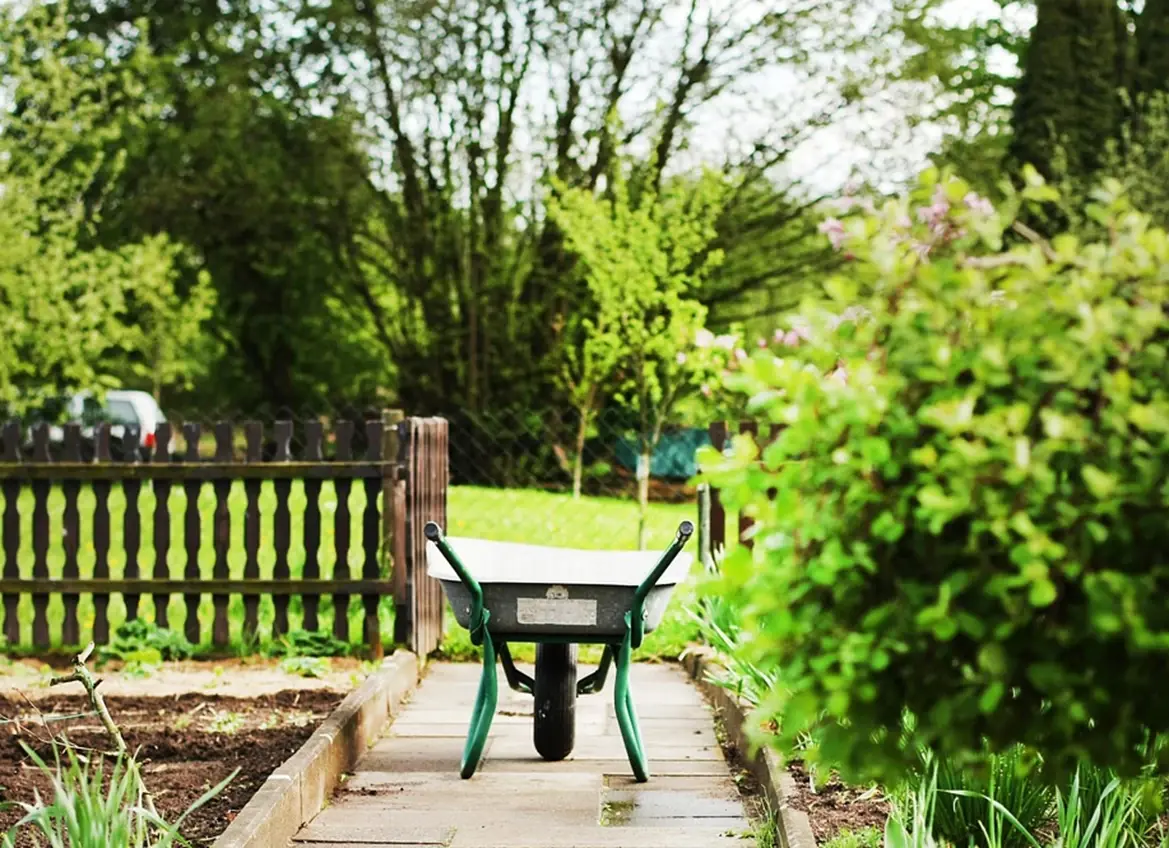
After a long, cold winter, it’s exciting to see the earth begin to bloom. But if you don’t take proper steps to protect and care for your lawn this fall, it may look drab and brown this spring.
Before packing away your lawn tools for the winter, here’s what you need to do to set your lawn up for success:
Remove leaves
Ridding your yard of leaves isn’t only for aesthetics. A layer of leaves on your grass will block sunlight and trap moisture, which only smothers your grass.
If you dread raking, try mulching your leaves with your mower. Mulched leaves (and fertilizer) will provide your grass with nutrients to keep it healthy throughout the winter.
Extra tip: Look up! Don’t forget to remove leaves and debris from your gutters, too. Obstructions in your gutters can cause costly water damage to your home.
Mow
Continue to mow your grass until the first hard freeze of the season. Keeping it two and a half to three inches is ideal for the winter. If your grass is too long, it will mat down and suffocate; if it’s too short, cold weather can easily reach and damage the roots.
When it’s time to put the mower away, do your future self a favor and winterize it: sharpen the blades, change the oil and spark plugs, and inspect it for damage.
Aerate
Roots have a difficult time receiving nutrients in the summer due to heat stress and compacted soil caused by heavier foot traffic. These conditions make it easy for grass to become thatched, which chokes out the roots and causes thinning and dead spots in your lawn. To bring your lawn back to life by spring, try aerating it.
Aeration is essentially poking holes in your lawn to loosen the soil and create space for oxygen, water, and important nutrients to reach the roots. Aerating your soil every few years will help keep your grass green and lush.
Fertilize and seed
Fall is undoubtedly the best time to fertilize your lawn. For best results, fertilize once in early fall to help rebuild damaged grassroots and again six to eight weeks later to help your roots stock up on nutrients for the winter.
If you aerate your lawn, apply your fertilizer shortly after. The holes created from aeration will allow your fertilizer to go directly to the roots where it’s needed most.
Fall is also the best time to seed any dead spots on your lawn.
Eliminate weeds and pests
If your lawn has pests or bugs, don’t count on the winter weather to eliminate them. Pests living in your lawn will reappear to wreak havoc when your grass begins to grow again in the spring. Apply a pesticide to eliminate pests, or call a professional if you need additional help identifying what’s causing the issue.
On the flip side, winter weather can help eliminate weeds. Killing or weakening weeds before freezing weather will help ensure that they don’t grow back in the spring. Check for a two-in-one fertilizer and weed killer to knock out both jobs at once.
The bottom line
Timing is of the essence when it comes to lawn maintenance—and your schedule will rely heavily on the climate you live in. Some basic things to avoid are aerating before the weather has cooled and fertilizing or seeding too close to freezing temperatures.
Taking the time to care for your lawn this fall will ensure that you can reap the benefits when spring comes. And with your lawn in good shape, you’ll be able to focus on other yard work and outdoor projects this spring.
